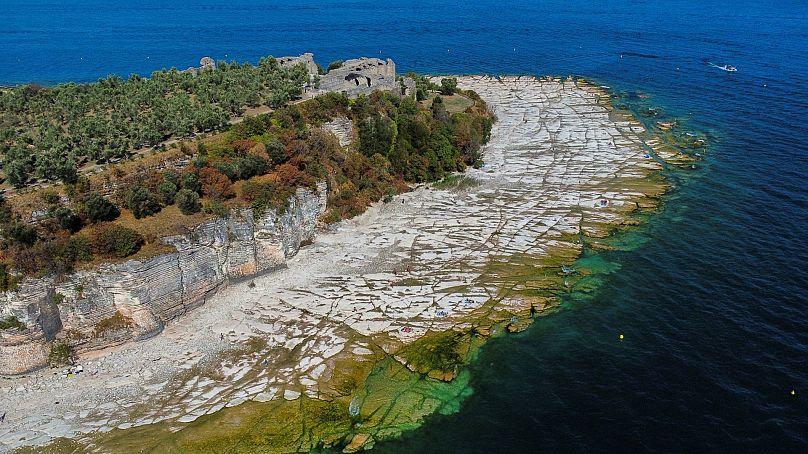Italy’s drought caused €6 billion in losses last year. What’s the outlook for 2023?
Water storage levels in parts of Italy are less than half their normal levels, experts have warned.
After little rain and meagre Alpine snowfalls over winter, Italy is bracing for a second consecutive year of severe drought.
Reservoirs and lakes are at extremely low levels, threatening agricultural production.
"The consequences of such a long drought are there for all to see,” warned Ramona Magno, a researcher at the Institute of Bioeconomy at the National Research Council.
“The big lakes are well below their seasonal average levels, especially the level of Lake Garda has reached its lowest point with about 38 per cent of its capacity.
“Along the entire course of the Po River, the water flow is lower than last year during the same period."
Water storage levels in parts of Lombardy are less than half what they normally are at this time of year, said Attilio Fontana, president of the region.
How bad was the Italian drought in 2022?
Italy last year reeled under its worst drought in 70 years. The Po - the country’s longest river - turned into a long stretch of sand.
An abnormally dry winter brought scant relief for farmers. Lake Garda reached its lowest wintertime levels in over 30 years, revealing a sandy pathway to the isolated island of San Biago.
In February, the lake’s waterline was around 65 cm below average for this time of year.
The extended run of dry weather is devastating the country’s crops. Coldiretti, Italy's main farmers’ association, said the sector had lost some €6 billion last year and predicted 300,000 businesses would lose more if the drought does not end.
Boat operators are also feeling the strain as the river's flow rate slows and waters become shallow. Navigation for larger vessels will become impossible if rainfall doesn’t arrive soon.
How bad will Italy’s drought be this year?
Extreme drought is already affecting 6 per cent of towns in Lombardy and Piedmont, with 19 of them experiencing the highest level of shortage, said Utilitalia, a federation of utility companies.
It said some towns had already started receiving drinking water in tanker trucks.
At the beginning of April, the Po River level hit a seasonal record 30-year low, with flow rates of one third of the average, according to the Po basin authority.
The surrounding Alps experienced an unusually dry and warm winter so don't have the snow reserves that would have normally fed the river in late spring and summer.
Snow cover is now at 75 per cent below the 10-year seasonal average, according to the Bolzano province climate and environment agency. The Alpine lakes in the province usually store an average 100 million litres of water, but the current level is barely reaching 42 million litres.
Such unusually dry weather will become increasingly common. The latest report from the Intergovernmental Panel on Climate Change predicts rainfall in the Po valley will vary more in the coming years, with an increase in extreme weather events.
"The frequency and intensity of extreme weather events are raising the bar higher and higher,” said Magno.
“The costs of a response become unsustainable and leave deeper and deeper wounds that are difficult to heal."
Along the banks of the Adige river in northern Trento, the water has a flow rate half the seasonal average.
The low flows let the Adriatic sea seep up the Po and Adige rivers for tens of kilometres, endangering crops, clam farms, aquifers and even the drinking water of some villages.
How is Italy preparing for the drought?
Italian Prime Minister Giorgia Meloni last month set up a control room to monitor water capacity across the country. In February, she appointed an "extraordinary commissioner with executive powers" to carry out the government's drought battle plan.
But some say the government is not looking far enough ahead.
“Italy is very good at handling emergencies, but quite bad in planning,” says Alessandro Bratti, secretary general of the Po river authority. “In the recent drought decree issued by the government there is nothing, there is no multi-year planning, there are no executive infrastructure projects."
Salted water intrusion could be curbed by anti-salt barriers, but the Po basin authority has only recently received the funds for a project and it will take years or even decades before the foundation stone will be laid.
On the local level, the Lombardy government has asked water companies and hydroelectric operators to limit their usage.
Many farmers are also investing in precision irrigation to save water during the hottest months of the year.












